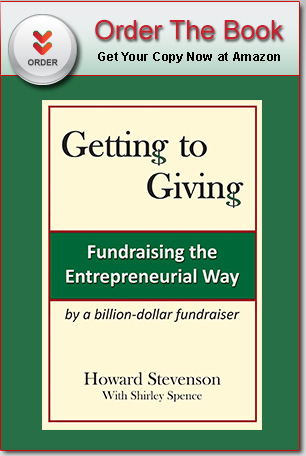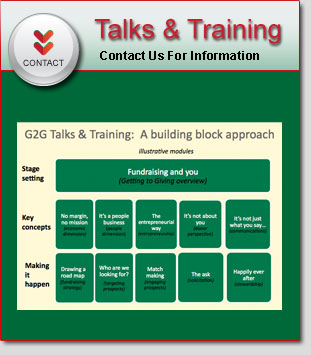This one will generally elicit one of two reactions: (1) “Huh?” and (2) “Of course not!” Let’s deal with each, in turn.
The “Huh?” reaction is often from fundraisers who are so passionate about their mission that they can’t understand why anyone might be – well – less than excited. They may see “donors” as one great undifferentiated blob. The fact is that donors come in all shapes and sizes, with different interests and their own set of giving priorities.
Not recognizing that fact can lead to this scenario. The following conversation was with a friend on the Boston Museum of Science’s board.
She explained: “One of our donors gives a little something every year, but we want to raise his sights. He’s told us that he doesn’t particularly like museums, and wants to give his money to underprivileged children. What should we do?”
I replied: “Nothing.”
Why that rather discouraging response? Because there was no hope. The museum wasn’t a priority for the donor, and that’s what it takes to garner a significant gift.
People may give several or even many checkbook gifts. It may be to support an organization that is important to a friend or family member. How many times have you been asked to buy Girl Scout cookies? Or support a friend’s cause? It may be in response to a crisis, such as Hurricane Katrina. The cause will be perceived as worthy, but not worthy enough to invest a sizeable chunk of your philanthropic dollars. People will only make two of three of that magnitude, and it will be for causes that that they are passionate about, and to organizations that they trust to make good use of their money.
Here’s another story, illustrative of another common mistake. I was leading a session on fundraising with a group of nonprofit leaders. When I asked for best and worst fundraising experiences, a man’s hand shot up. He explained that some of his prospects responded to his pitch enthusiastically, others were lukewarm at best. And yet—he continued, displaying a mixture of puzzlement and indignation—he was making exactly the same pitch each time! Why were the responses all over the map?
Around the room, many heads were nodding in sympathy. Why, indeed?
From the way I’ve related this story, and from your own experience, you probably already know the answer. A “one size fits all” approach to fundraising can’t work consistently. Your job as a fundraiser is to arrive at a deep understanding of what motivates each donor, and consider what you are proposing from his or her perspective.
You can’t assume that everyone is as excited about your work as you are; it’s not all about you. Your job is not to try to change people’s mind, but to find like-minded people and convince them that – together – you can accomplish something that you could not do alone.
Now, let’s look at the “Of course not!” reaction to “it’s all about you.” That usually is accompanied by “It’s all about the donor!” Well, not really. At the risk of raising a few eyebrows, I’ll posit that mission comes first, then donors. Yes, donors provide the lifeblood of many nonprofits, and acquiring and retaining donors is the core work of fundraising. But there are compelling reasons why your focus must remain first and foremost on your mission.
Focusing intensively on mission can help you avoid two common mistakes. The first is accepting funding for projects that aren’t consistent with your mission, which can cause you to veer off course, and end up with a jumble of unrelated initiatives driven by donors’ wishes rather than what you set out to accomplish.
The second mistake is making the institution, rather than the cause it serves, your priority. Focusing on the institution tends to lead to the creation of a laundry list of things that the institution thinks it needs to function effectively. Such a list—or at least some of the items on it—may be of interest to some donors. But it will almost certainly turn off potential significant supporters who could have been inspired by your broader purpose.
Being mission-driven also keeps you from ignoring potential supporters who should not necessarily be dismissed out of hand. One of my favorite philanthropy-related articles is titled, “An Episcopalian, an Atheist, and a Jew Walk into a Catholic School…”[1] The article describes a number of non-Catholic “patron saints” who stepped up in big way to support inner-city Catholic schools, because they cared about the kids in those schools, and saw the parochial-school system as performing better and at lower cost than its public counterpart.
Does any of this sound familiar?
[1] “An Episcopalian, an Atheist, and a Jew Walk into a Catholic School…”, Christopher Levenick, Philanthropy Roundtable, April 1, 2010




